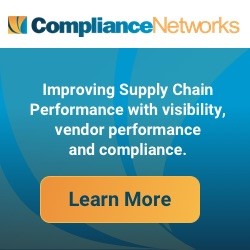|
 |
March 22, 2018 - Supply Chain Flagship Newsletter
|
|
|
|
| |
THIS WEEK'S SPONSOR: COMPLIANCE NETWORKS
|
|
| |

Compliance Networks' Suite of Supply Chain Performance Improvement Solutions Will Help Extend Your Supply Chain for the Omni-Channel Challenge

|
|
| |
|
|
|
|
 |
SUPPLY CHAIN NEWS BITES
|
Factory of the Future Technology is Here Today
|
|
 |
UPS Going All Electric in London after Breakthrough
|
 |
Will IMO Mandate Slow Steaming to Reduce CO2? |
 |
US Truckload Rates Still Heading Higher |
 |
China's JD.com Spending Billions on Delivery Technology |
| |
|
|
|
|
|
|
|
Retail-Vendor Supply Chain Mars and Venus 2018 Part II
Last week I did part I of a two-part summary of SCDigest's excellent new benchmark report on The State of Retail-Vendor Supply Chain Relationships 2018, based on a major survey we did in late 2017. It was the second in what we plan to be on on-going series of such benchmark studies on this topic.
The report is based on a survey of SCDigest readers, along with support from RVCF (Retail Value Chain Federation), which encouraged its members to participate. In addition, the research was supported by our friends at Compliance Networks, a well-known provider of retail vendor performance management solutions.
| GILMORE SAYS: |
Over the last 18 months or so, Walmart and Target both have recently announced programs to reduce vendor variability.
WHAT DO YOU SAY?
Send us your
Feedback here
|
All told, SCDigest received survey responses from 44 retailers, about 165 consumer goods manufacturers, and 60 from the "other" category.
That first column, which you can find here, was mostly an overview of the incredible changes taking place in this value chain, the most prominent and important in the industry. I then also included a couple of graphs and some interesting commentary from survey takers on the always controversial topic of retail chargebacks. Let's just say neither retailers or vendors see reductions in chargeback levels any time soon.
This week I am back with a look at results from other areas of retailer-vendor supply chain relationships.
The good news is both sides say that their relationships Are getting slightly better - or at least not deteriorating. We asking both retailers and vendors to rate their current relations with vendors or retailers from a supply chain perspective on a scale of 1 to 7, with 1 being the worst and 7 being the highest. We then took those scores and grouped them, in an approach we use throughout this report: 1-2 categorized as low, 3 to 5 medium, and 6 or 7 high.
As can be seen in the chart below, the results were almost identical, with 72% of both retailers and vendors indicating they had medium levels of supply chain relationships, and 28% claiming high levels, while no retailer or vendor said they had poor supply chain relationships. |
|
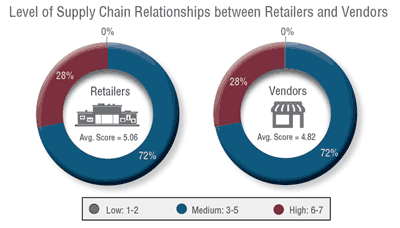
See Full Image |
|
The average score for retailers was 5.06, a bit above the 2016 benchmark average of 4.72, while the average vendor score was of 4.82 was almost identical to the average of 4.85 in the prior survey.
"On-time, on-full continues to be challenging," one vendor commented. "Not all retailers apply same metrics."
"Good relations but not great compliance," interestingly said one retailer. Added another: "Would say things are fairly status quo, which means OK but not great in this time of immense change."
You can certainly say that again.
To my mind very importantly, over the last 18 months or so, Walmart and Target both have recently announced programs to reduce vendor variability, an area where frankly most retailers historically have put little real focus, other than collecting chargebacks. Grocers HEB and Kroger have also launched similar initiatives, in a first for the grocery sector.
Is this a real overall trend in the consumer goods to retail supply chain? An emerging one, our survey data says. A significant 30% or retailers say reducing vendor-caused supply chain variability is a major focus area, with another 59% saying it is at least a modest focus.
On the vendor side, 15% see variability as a major retail focus, though the vast majority (66%) say they aren't sure yet, as shown in the graphic below. |
|
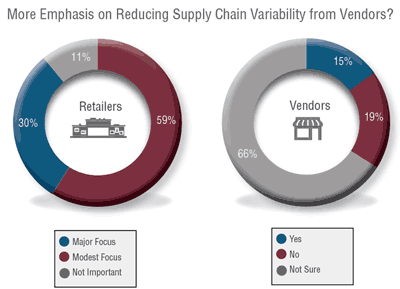
See Full Image
|
|
The comment from one vendor probably has it right: "With Walmart - absolutely. If they are successful, others will follow."
Commented one retailer that sees lots of opportunity on this area: "There is no question retailers are relatively unfocused on the impact of supply chain variability, and there is much to be gained here."
Lastly, we also asked both retailers and vendors to rate their overall level of supply chain collaboration capabilities.
As can be seen in the chart below, 16% of retailers believe they are "near the top" in terms of collaborative skill and practices. Interestingly that was up from 0% in the previous study. Another 44% of retailers believe they are above average. Only 11% believe their collaboration is below average. |
| |
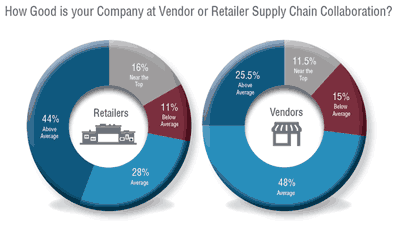
See Full Image |
|
A similar story occurs on the vendor side, with 11.5% believing they are near the top of the collaboration hill. But only 25% believe they are above average, while a significant 15% say they are below average.
I wish we had asked more questions about what each side can do to improve collaboration. Will do that in the 2020 survey I promise.
There is so much more, but I am out of space. This is really good data, and especially interesting are the many comments from survey takers. You can download the report here.
What's your view on the state of retail-vendor relations 2018? How are macro-trends impacting that? What are your thoughts on this data? Let us know your thought at the Feedback button below.
|

|
|
|
| |
|
|
On Demand Videocast: |
Reducing Costs through Automated Inventory Replenishment & Analytics |

|
How Motor City Industrial Taps into Data Visualization to Help Customers Identify Waste, Reduce Inventory
This videocast discusses how to connect people, processes and technology across commerce and supply chain operations to achieve unified commerce.
Featuring Dan Gilmore, Editor along with Joseph Stephens, CEO, Motor City Industrial, Jay Fielder, Supply Chain Technology Manager, Motor City Industrial and Mike Wills, Chief Revenue Officer, Apex Supply Chain Technologies.
|
 |
| Now Available On Demand |
|
On Demand Videocast: |
Yes, Retailers and Distributors Can Survive and Thrive by Unifying Commerce and Supply Chain
|
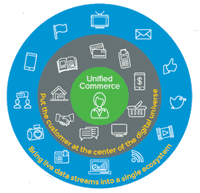 |
Integrated Approach will Improve Customer Experience as Smart Retailers Move Beyond Omnichannel
This videocast discusses how to connect people, processes and technology across commerce and supply chain operations to achieve unified commerce.
Featuring Dan Gilmore, Editor and enVista CEO Jim Barnes, a highly recognized industry expert on retail and distribution.
|
 |
Now Available On Demand |
|
On Demand Videocast: |
The State of Retail-Vendor Supply Chain Relationships 2017
|

|
Results from SCDigest's Second Biannual Benchmark Study of Retailers and Their Vendors - and SCDigest's New Index to Measure State of the Relationships
These findings are being presented in a live panel discussion with interactive questions from audience members throughout.
Featuring Dan Gilmore, President & Editor-in-Chief of Supply Chain Digest plus Greg Holder, CEO, Compliance Networks, Kim Zablocky, President, RVCF (Retail Value Chain Federation)
and Victor Engesser, Retail Executive Advisor, RVCFP.
|
 |
| Now Available On Demand |
|
|
YOUR FEEDBACK
We received a good handful of emails from our story on a panel of manufacturers talking about doing drop shipping for retailers, many from our friends at RetailWire. A selection can be found below. |
Feedback on Vendor Drop Shipping for Retail

Wow does this feel like "deja vu all over again!" I can remember having countless eerily similar conversations with retailers as they struggled with single-order fulfillment challenges 15 years ago. Some of the "solutions" retailers were deploying sound eerily similar as well.
Regardless of how they get there, however, suppliers will no doubt have to provide retailers with the speed and flexibility that shoppers expect, or retailers will take their business elsewhere, just as shoppers did when retailers failed to keep pace with their expectations.
Dave Bruno
Marketing Director
Aptos

|

Going from shipping floor-ready inventory by the pallet to single units to a customer is quite a difference, and the inventory control issues are just the start of the challenge. Whether the supplier puts dedicated inventory into a third-party logistics provider who can do customer pick, pack and ship, or invests in the physical, technical and personnel resources to do it themselves, the overriding question ends up being, who pays for this?
The shopper expects this service for free, and until the cost and gross margin on a product changes to provide this service, "who pays" is really the elephant in the room.
Peter Charness
SVP America
TXT Group

|

It is a new ball game. The supplier has to add the capability to ship individual packages to individual addresses. This is quite different than shipping in bulk to distribution centers or even directly to stores. The supplier now has to provide detailed information about each transaction electronically to the retailer, and in real-time whenever possible (we commented on the importance of real-time transaction processing in a previous discussion).
It is new, it is exciting and it is very different from the old way of being a supplier.
Bob Amster
Principal
Retail Technology Group

|
SUPPLY CHAIN TRIVIA ANSWER
Q: One of the pioneering Warehouse Management System companies, Logisticon, went out of business in the 1980s after it did what to major customer Revlon?
A: Remotely turned off the system for about 12 hours over a billing dispute, meaning Revlon couldn't ship. Investors then pulled the plug.
|
© SupplyChainDigest™ 2003-2018. All Rights Reserved.
SupplyChainDigest
PO Box 714
Springboro, Ohio 45066 |
|
|



![]()

![]()

![]()


